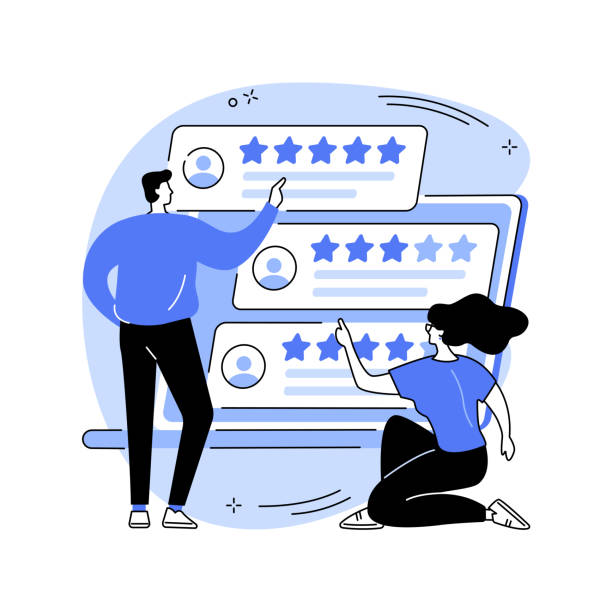1. Why is Multilingual Website Design a Necessity?
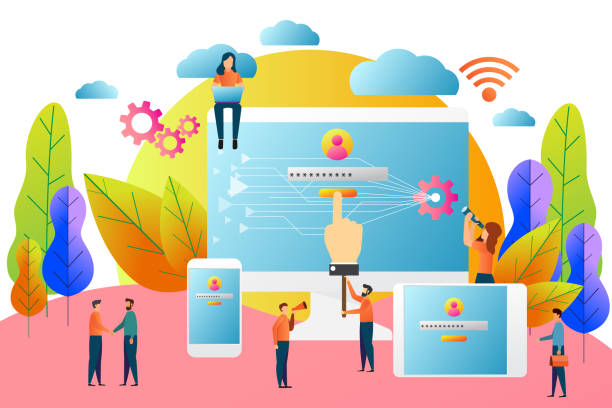
In today’s world, where geographical boundaries have no meaning in cyberspace, #global_access has become a competitive advantage.
#Multilingual_website_design is no longer a luxury choice but a strategic necessity for many businesses and even individuals.
This approach allows you to deliver your message to audiences beyond your native language and discover new markets.
A monolingual website practically ignores half of the global potential.
Imagine a potential customer in another country overlooking your services or products due to lack of access to content in their own language.
This not only means losing a sale but also eliminates the opportunity to build a long-term and loyal relationship with that customer.
Multilingual website design helps businesses establish deeper connections with visitors, build trust, and enhance their international credibility.
This process goes beyond merely translating words; it involves localizing content, respecting cultural differences, and providing an experience perfectly tailored to the target audience’s language and culture.
Therefore, if you are looking to expand your activities and attract global audiences, multilingual website design is the crucial first step to achieving this goal.
Are you tired of your company’s website not being seen as it deserves and losing potential customers? Solve this problem forever with professional and effective website design by Rasaweb!
✅ Increase brand credibility and build customer trust
✅ Attract targeted sales leads
⚡ Contact us now for a free consultation!
2. Key Benefits of Implementing a Multilingual Website

Implementing a #multilingual_website brings numerous benefits that can lead to a significant transformation in your business’s growth and development.
One of the most important advantages is a significant increase in website traffic.
By targeting keywords in various languages, you will be able to appear in search engines for a wider audience.
This means more opportunities to attract new customers from all over the world.
Furthermore, designing a multilingual site leads to an improved user experience (UX).
When users can read content in their native language, they feel more comfortable and trusting, which directly impacts the Conversion Rate positively.
Studies have shown that users are more likely to purchase from websites available in their native language.
This approach also helps strengthen your international branding.
Presence in global markets with a localized website demonstrates your respect for different cultures and languages and enhances your business’s credibility.
Finally, by utilizing multilingual website design and development, you can gain an edge over competitors, as many businesses have not yet paid sufficient attention to this enormous potential.
3. Technical Challenges and Key Considerations in Multilingual Website Design
![]()
When #designing_a_multilingual_website, we face a series of technical challenges and key considerations that require careful planning.
One of the most important challenges is the URL structure.
You need to decide whether to use subdomains (e.g., en.example.com), subdirectories (e.g., example.com/en/), or country code top-level domains (e.g., example.co.uk), each having its own advantages and disadvantages in terms of SEO.
Also, choosing a Content Management System (CMS) that supports multilingualism is crucial.
WordPress with plugins like WPML or Polylang, or platforms like Drupal and Joomla, are popular options.
#Multilingual_content_management involves the processes of translating, storing, and displaying content in different languages, which must be done efficiently.
Other challenges include User Interface (UI) design, which must be adaptable to different text directions (such as right-to-left for Persian and Arabic, or left-to-right for English) and varying word lengths.
This includes element layout, fonts, and even image selection.
For example, an image that has a positive meaning in one culture might create misunderstanding in another.
Managing media files and ensuring their optimization for each language is also important.
Finally, implementing `hreflang` tags for search engines to correctly identify different language versions of pages is a highly specialized and vital step.
| Structure Type | URL Example | Advantages | Disadvantages |
|---|---|---|---|
| Subdirectories | example.com/en/page | Easy to set up, all domain authority in one place, easier management in Google Search Console. | May be less intuitive for some users. |
| Subdomains | en.example.com | Can have separate hosts, clear and identifiable for users, easy for Geo-targeting management. | May require separate SEO management for each subdomain, slightly more complex to set up. |
| Country Code Top-Level Domains (ccTLDs) | example.co.uk | Best option for strong Geo-targeting, high trust from local users, best for local SEO. | Expensive, requires separate management for each domain, may require company registration in each country. |
4. Search Engine Optimization (SEO) for Multilingual Websites
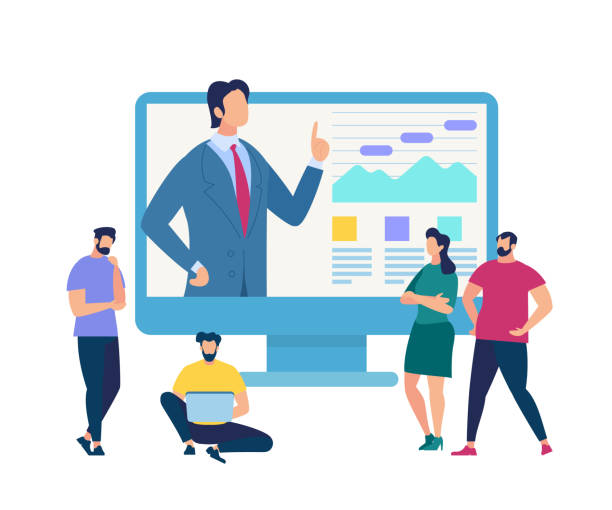
Search Engine Optimization (SEO) for #multilingual_websites has its own complexities that go beyond traditional SEO.
The most important element in this regard is the correct use of the `hreflang` tag.
This tag helps search engines like Google display the correct version of a page to users searching based on language and geographical location.
Failure to use or incorrect use of `hreflang` can lead to #duplicate_content, which harms your site’s ranking.
In addition, keyword research must be conducted separately for each language and region.
Keywords popular in one language may have a different meaning or not be used at all in another language.
Also, a literal translation of keywords is not enough; instead, #keyword_localization and understanding user intent in each language must be performed.
Website loading speed (Page Speed) is also very important for international users; using CDN (Content Delivery Network) servers can help improve speed for audiences worldwide.
Finally, internal and external linking should also be done considering different languages.
Linking to credible and relevant sources in the language of each page increases that page’s credibility.
Tired of losing business opportunities due to not having a professional corporate website? Don’t worry anymore! With Rasaweb’s corporate website design services:
✅ Your brand’s credibility and professionalism will increase.
✅ You will attract more customers and sales leads.
⚡ Get a free consultation now to start!
5. User Experience (UX) and Localization in Multilingual Web Design

The success of a #multilingual_web_design heavily depends on #user_experience (UX).
Simply translating text is not enough; instead, the content and site design must be localized to align with the culture and expectations of audiences in each language.
This includes aspects such as date and time formats, currency units, measurement systems, and even colors and images.
For example, the color red symbolizes love and passion in some cultures, while in others it might symbolize danger.
A localized user interface should clearly provide a language selection option in an accessible location (usually in the header or footer) and ensure that this user selection is maintained throughout their visit.
Also, #text_direction (Right-to-Left or Left-to-Right) must be considered to correctly display content for languages like Persian, Arabic, or Hebrew.
This includes text alignment, icon orientation, and the overall flow of elements on the page.
Considering cultural and social sensitivities in content, images, and even fonts can deeply impact user interaction and transform your multilingual website design from a merely translated website into a fully localized experience.
This analytical approach to UX makes users feel that the website was designed for them, and not merely a translation of another version.
6. Content Management and Translation Processes in Multilingual Sites
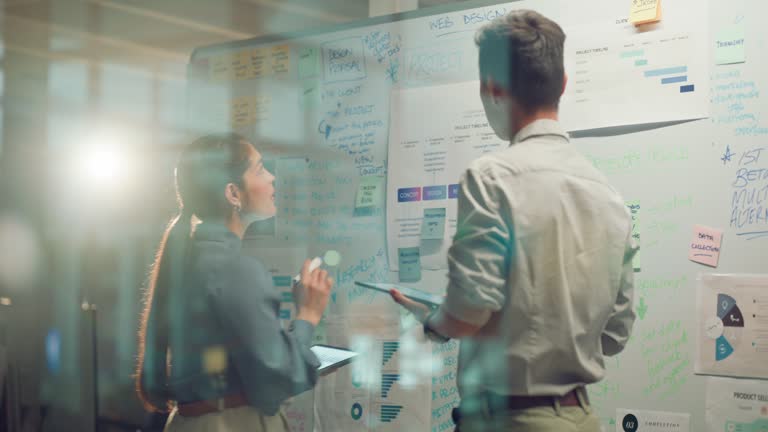
One of the most complex aspects of #multilingual_site_design_and_management is the #content_management and translation process.
This doesn’t just mean hiring translators; it requires a comprehensive strategy for creating, updating, and maintaining content in all languages.
The first step is to choose a suitable CMS (Content Management System) that offers multilingual capabilities natively or through powerful plugins.
More advanced systems offer features such as content duplication for translation, translation workflow management, and even integration with machine translation (MT) tools and translation memory (TM).
The #translation_process must include review and editing by native translators to ensure high accuracy and quality of content.
Translated content must not only be linguistically correct but also culturally and tonally appropriate.
This is especially critical for marketing and promotional content.
Furthermore, there must be a regular plan for updating content in all languages to ensure that information is always accurate and up-to-date.
Translation project management tools can help streamline this process and ensure that all language versions are published on time.
Finally, team training to work with the CMS and translation processes is a key element for long-term success in multilingual website design.
7. Useful Tools and Platforms for Building Multilingual Websites
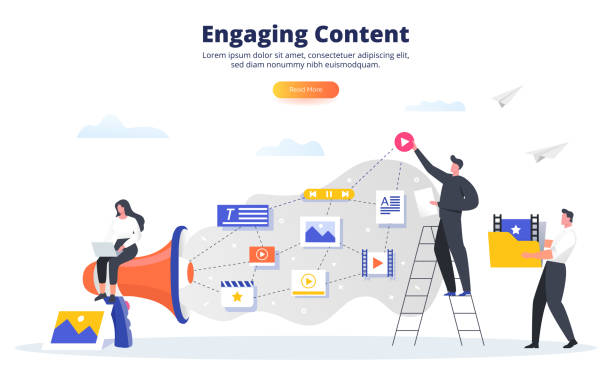
For #building_multilingual_websites, various tools and platforms are available today, each with its own advantages and disadvantages.
Choosing the right tool depends on the project’s complexity, budget, and your team’s technical knowledge.
One of the most popular options is using WordPress along with powerful multilingual plugins such as WPML (WordPress Multilingual Plugin) or Polylang.
These plugins allow direct management of translations within the WordPress dashboard and support #multilingual_SEO.
For larger and enterprise projects, platforms like Drupal and Joomla are also powerful options designed with multilingual capabilities from the outset.
These platforms offer greater flexibility for customization but may require more technical knowledge.
In addition to CMS, Translation Management Systems (TMS) such as MemoQ, Smartcat, or Lokalise can optimize the translation process.
These tools enable the management of Translation Memory and Glossaries, which help maintain consistency in translations and reduce costs.
Also, #machine_translation platforms like Google Translate API or DeepL can be used as a quick starting point for initial translation, although for professional content, human review is always needed.
Finally, testing and validation tools (such as Google Search Console tools for hreflang) are also crucial to ensure the correct functioning of a multilingual site.
| Platform/Tool | Key Multilingual Features | Suitable for | Considerations |
|---|---|---|---|
| WordPress + WPML/Polylang | Management of post, page, category, menu translations; hreflang support. | Small to medium websites, blogs, online stores. | Requires a separate plugin, WPML is paid, may have limitations for very large projects. |
| Drupal | Native and powerful multilingualism in the core, multilingual content and UI management. | Large enterprise projects, complex websites with high customization needs. | Steep learning curve, requires expert developer. |
| Joomla | Native multilingual support, easy translation management. | Medium websites, portals, news sites. | Less community support than WordPress, may require more plugins for advanced features. |
| Translation Management Systems (TMS) | Translation memory, glossary, translation workflow management, CMS integration. | Companies with high volume of translated content, internal or external translation teams. | Usually subscription-based and paid, requires initial training for use. |
8. Common Mistakes in Multilingual Site Design and Implementation

In the process of #multilingual_site_design_and_implementation, there are common mistakes that can render your efforts fruitless.
One of the biggest mistakes is machine translation without human editing.
Although machine translation tools have advanced significantly, they are still unable to fully grasp cultural nuances, local idioms, and appropriate tone.
This can give your website an unprofessional appearance and even harm your brand’s reputation.
Another mistake is #ignoring_multilingual_SEO, especially the incorrect use of the `hreflang` tag, which leads to duplicate content issues and a decrease in search engine rankings.
Failure to localize content and merely literal translation is also a major error.
Content must align with the culture and expectations of audiences in each language; this includes images, examples, and even humor.
Insufficient testing before launch can lead to unintended technical problems such as incorrect language display, broken links, or formatting issues.
Also, forgetting to provide customer support options in different languages severely degrades the user experience.
Finally, failure to plan for continuous updates and management of new content in all languages means the website will quickly become outdated and inefficient.
By avoiding these common mistakes, one can ensure the success of their multilingual site design and development.
Are you worried about your e-commerce site’s low conversion rate and not achieving your desired sales?
Rasaweb is your specialized solution for a successful e-commerce site.
✅ Significantly increase conversion rates and sales
✅ Professional and user-friendly design to satisfy customers
⚡ Ready for a transformation in online sales? Get a free consultation!
9. The Future of Multilingual Websites and Artificial Intelligence

The future of #multilingual_website_design is strongly intertwined with advances in #artificial_intelligence (AI) and machine learning.
AI-powered machine translation tools are expected to provide higher accuracy and quality, thereby reducing the need for human editing and making the translation process significantly faster and more cost-effective.
Artificial Intelligence can also play a role in #advanced_localization; by analyzing user data and cultural preferences in different regions, AI will be able to automatically optimize content, images, and even website layout for each language and culture.
This goes beyond simple word translation and moves towards deeper personalization.
Also, automatic language detection systems in browsers and websites are expected to become smarter and be able to identify and suggest the user’s preferred language with greater accuracy.
These advancements will make the user experience smoother and more seamless.
On the other hand, #multilingual_SEO will also benefit from these developments.
AI-powered SEO tools can help better analyze local keywords, understand search intent, and suggest the best structure for ranking in different languages.
This combination of Artificial Intelligence and multilingual website design will provide unprecedented opportunities for businesses to reach global markets and communicate more effectively with audiences.
These developments can help reduce time and costs in #multilingual_projects and make the globalization process more democratic.
10. Conclusion and Strategic Importance of Multilingual Websites

In summary, #multilingual_website_design is not only a technical decision but also an essential business strategy in the age of globalization.
Given the widespread internet penetration and increased access to information from around the world, the ability to communicate with audiences in their native language is an undeniable competitive advantage.
As discussed, from increased traffic and improved SEO to enhanced user experience and strengthened international branding, the benefits of a multilingual website are extensive.
However, success in this area requires careful planning, attention to technical and cultural details, and the correct selection of tools and content management processes.
Ignoring the need for multilingualism on your website means losing a huge portion of the potential market and limiting your business’s growth potential.
With continuous advancements in AI and translation technologies, implementing and managing a multilingual website will also become easier and more efficient in the future.
Therefore, investing in multilingual website design is an investment in the future of your business and ensures its sustainability in the global market.
This action not only helps increase sales but also builds deeper and more lasting relationships with customers worldwide and solidifies your position as a global player.
This analytical and guidance-oriented approach clearly demonstrates the #strategic_multilingualism importance.
Frequently Asked Questions
| No. | Question | Answer |
|---|---|---|
| 1 | What is multilingual website design? | Multilingual website design means creating a website whose content is available to users in several different languages. This is usually done through a simple user interface for changing the language. |
| 2 | Why should we design a multilingual website? | Multilingual website design helps you reach more audiences worldwide, provide a better user experience for international users, and improve your global SEO. |
| 3 | What are the main methods of implementing multilingualism on a website? | The main methods include using subdomains, subdirectories, or URL parameters for each language, as well as using completely separate domains for each language. |
| 4 | For SEO, is it better to use a subdirectory or a subdomain? | From an SEO perspective, both subdirectories and subdomains can be effective. However, many SEO professionals prefer subdirectories due to better transfer of main domain authority. |
| 5 | What are the important points in translating multilingual site content? | Translation should be done by native translators, content should be localized in addition to translation to be consistent with the target audience’s culture, and pure machine translation should be avoided. |
| 6 | What is the role of the hreflang tag in multilingual site SEO? | The hreflang tag helps search engines like Google display the correct language and regional version of a page to appropriate users, which also prevents duplicate content issues. |
| 7 | Can a website be made multilingual without coding? | Yes, in Content Management Systems (CMS) like WordPress, powerful plugins such as WPML or Polylang exist that allow making a website multilingual without needing to code. |
| 8 | What are the challenges of multilingual website design? | Challenges include translation management, content localization, adherence to SEO principles for each language, technical support for different languages, and ensuring design consistency across different languages. |
| 9 | What is the difference between translation and localization? | Translation is merely converting words from one language to another, whereas localization involves adapting content to the culture, customs, currency, date and time formats, and even appropriate colors for the target audience. |
| 10 | What is the best user experience (UX) for language switching? | A clear and accessible language switch (usually in the header or footer), using language names instead of flags (due to regional variations), and maintaining the user’s position after changing language are important UX considerations. |
And other services of Rasaweb Advertising Agency in the field of advertising
Smart Sales Automation: A fast and efficient solution for increasing click-through rates with a focus on Google Ads management.
Smart Conversion Rate Optimization: A combination of creativity and technology to increase website visits through intelligent data analysis.
Smart Marketing Automation: A novel service for improving SEO rankings through key page optimization.
Smart Link Building: A combination of creativity and technology to attract customers through custom programming.
Smart Custom Software: A combination of creativity and technology to increase click-through rates by using real data.
And over hundreds of other services in the field of internet advertising, advertising consulting, and organizational solutions
Internet Advertising | Advertising Strategy | Sponsored Articles
Sources
Advantages of Multilingual Website Design and Market Expansion
Comprehensive Guide to Professional Multilingual Website Design
How to Penetrate Global Markets with Multilingual SEO?
Essential Tools for Translating and Managing Multilingual Sites
? With Rasaweb Afarin, take your business to the peak of success in the digital world. We pave your growth path with comprehensive digital marketing services, including custom website design, advanced SEO, and targeted advertising campaigns.
📍 Tehran, Mirdamad Street, next to Bank Markazi, Southern Kazeroon Alley, Ramin Alley, No. 6

